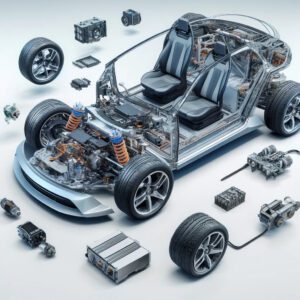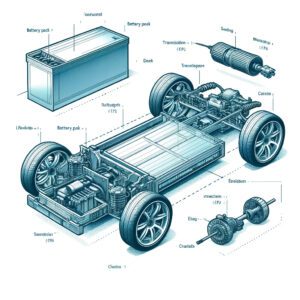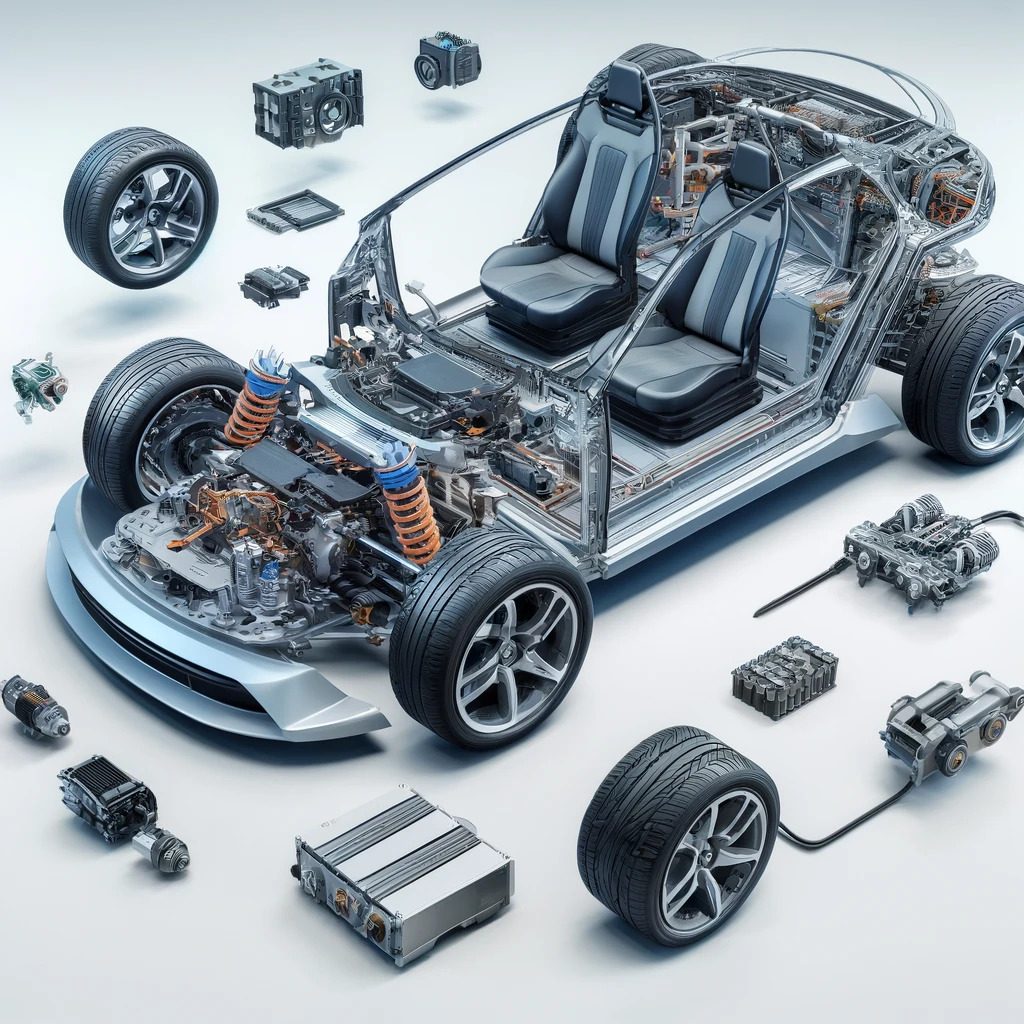An electric vehicle’s (EV) architecture is the configuration and arrangement of the various systems and parts that comprise an EV.
As opposed to conventional cars with internal combustion engines, EVs are powered by electric motors and store energy in batteries. This essential distinction results in distinct structures suited to the benefits and difficulties of electric propulsion. Let’s examine some critical elements and ideas that define EV architecture and emphasize the unique features that set them apart from traditional cars.
Consider an electric vehicle (EV) a sophisticated symphony in which all parts must operate perfectly together. The electric vehicle architectural system is the orchestra’s blueprint, outlining how all significant components – the battery, electric motor, charger, and control systems – communicate and collaborate.
It determines how power is distributed throughout the vehicle, from battery storage to wheel propulsion. This precise design ensures optimum energy use, peak performance, and overall safety for the EV driver and passengers.
Electric Vehicle Battery Pack
- Structure and Placement: The battery pack in an EV is not just a single battery but a collection of many smaller battery cells grouped into modules and packs. These are often strategically placed low in the vehicle’s chassis, contributing to a low center of gravity and improved handling.
- Thermal Management: Battery packs require sophisticated systems to maintain optimal operating temperatures. Innovations include liquid cooling systems and phase change materials that absorb heat during phase transitions.
- Energy Density and Safety: Modern EVs use high energy density batteries to maximize range while implementing safety measures like fire-resistant separators and advanced Battery Management Systems (BMS) to prevent overcharging and thermal runaway.
Electric Vehicle Electric Motors
- Types and Placement: EVs can use various electric motors, including induction motors and permanent magnet synchronous motors. These motors can be placed near the wheels (hub motors) for direct drive or centrally to power a differential.

- Regenerative Braking: A distinctive feature of EV motors is their ability to act as generators during braking, converting kinetic energy back into electrical energy to recharge the battery, thus increasing efficiency and range.
Electric Vehicle Power Electronics
- Inverter and Converter: Power electronics in EVs include devices like inverters, which convert DC electricity from the battery into AC electricity for the motors, and DC-DC converters, which adjust voltage levels for different components.


- Efficiency and Cooling: These components are designed for high efficiency and compactness but generate heat and require cooling, often integrated into the vehicle’s thermal management system.
Electric Vehicle Charging System
- Onboard Charger (OBC): The OBC converts AC electricity from the grid to DC electricity to charge the battery. It is a critical component for ensuring the battery’s longevity and health.
- Fast Charging and Infrastructure: Fast charging systems bypass the OBC to directly charge the battery at high speeds, requiring advanced cooling solutions and robust grid connections.
Vehicle-to-Grid (V2G) Technology
- Integration and Functionality: Some EV architectures incorporate V2G capabilities, allowing vehicles to return electricity to the grid during peak demand, effectively using the car’s battery as a mobile energy storage solution.

Software and Connectivity
- Over-the-Air (OTA) Updates: EVs often feature advanced connectivity and software that can receive OTA updates to improve vehicle performance and battery management strategies and add new features over time, much like updating the software on a smartphone.
Modular Platforms
- Flexible Design: Many automakers are developing modular EV platforms that accommodate various body styles, battery sizes, and motor configurations, allowing for economies of scale and the rapid development of new models.
These unique details of EV architecture differentiate them from traditional vehicles and highlight the innovation and engineering challenges overcome to advance electric mobility. This evolving landscape continues to push the boundaries of what vehicles can achieve regarding efficiency, performance, and environmental impact.
